To me, Ahmedabad felt like life itself, an ongoing performance of joyful living, indulgence and celebration – one that seemed to have no end or beginning. They say Ahmedabad’s heart beats to the sound of the Garba, but its soul ebbs through its cuisine. Whoever said vegetarian food is boring, needs to visit this melting pot of the modern and the traditional. This is a land whose very narrative begins through its chai and ends with its jalebis.
According to my boyfriend who took me around, I haven’t even scoured half of the city, yet all the kilos I’ve put on during the 3 weeks I’ve spent in Ahmedabad have a different story to tell.
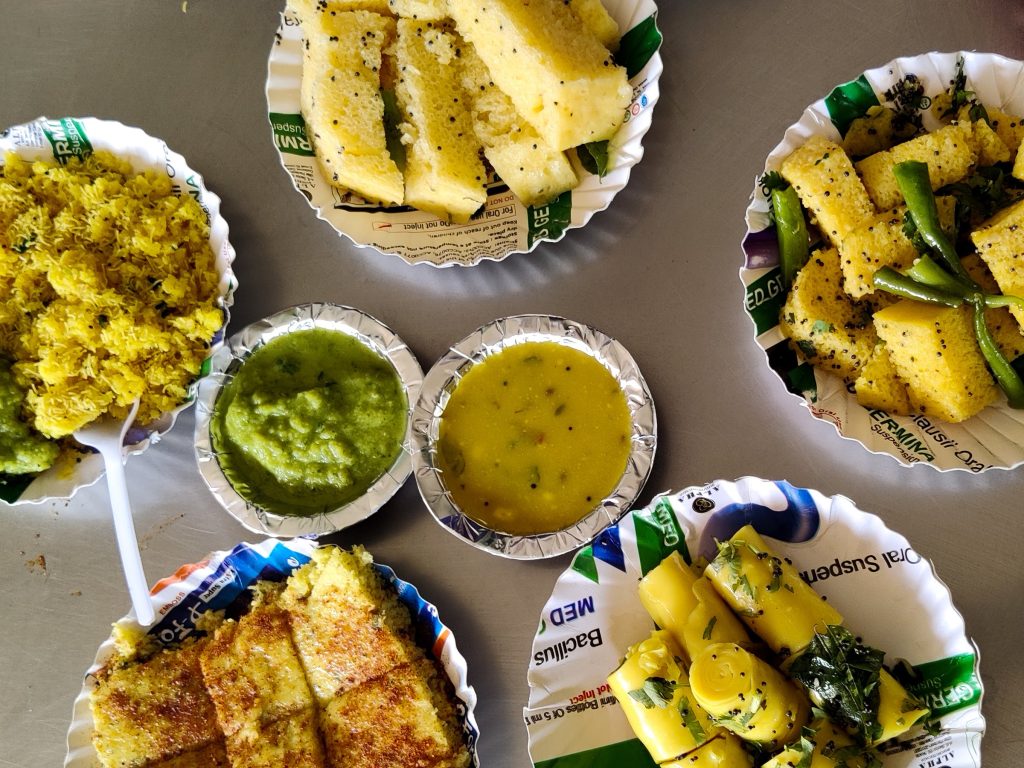
I met a boy on the internet. We connected. We talked about all things under the sun and those that hadn’t seen any light. After much planning and deliberation, we decided to meet. Somehow I convinced my mom to let me spend 3 weeks away from home, trekking through Uttarakhand and then sojourning in Ahmedabad for Uttarayan.
For those who don’t know, Uttarayan is this wildly popular festival that demarcates the beginning of spring and a bountiful harvest. All around the country, this time presents itself as Makar Sankranti, Maghi, Pongal, Bihu, Magha Sajhi, Kumaon, Kicheri, Makar Basiba and so on.
The list is endless and maybe, I’ll write about them all someday. For now, we explore my newest favourite city!
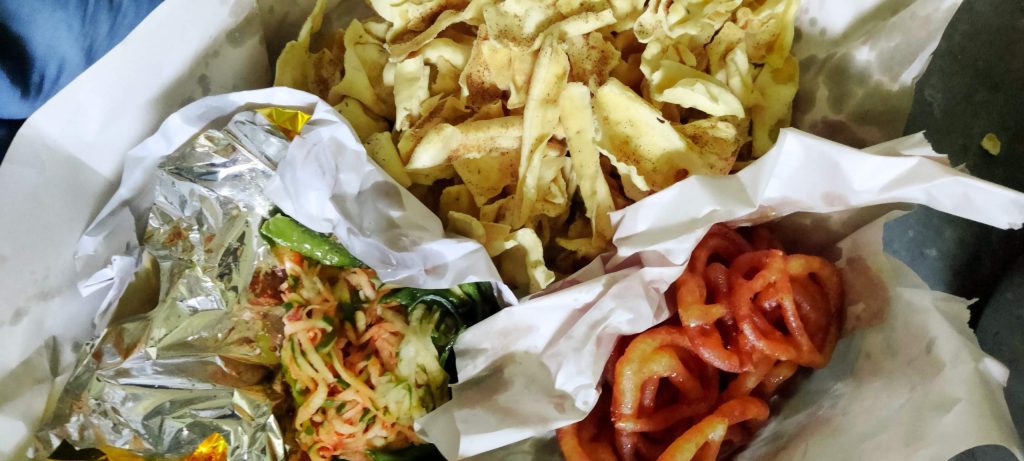
For a girl from the rural state of Goa, Ahmedabad felt more alive – like a heart thumping loudly after a heavy HIIT session. I let myself get lost in it and started with the one thing I’ve been waiting to try forever – Jalebis.
The last time I had jalebis was almost 8 years ago when we went to Sarojini Nagar and devoured those hot, sweet, crunchy dainties. Violins played in the background and I’m not even ashamed or embarrassed about it.
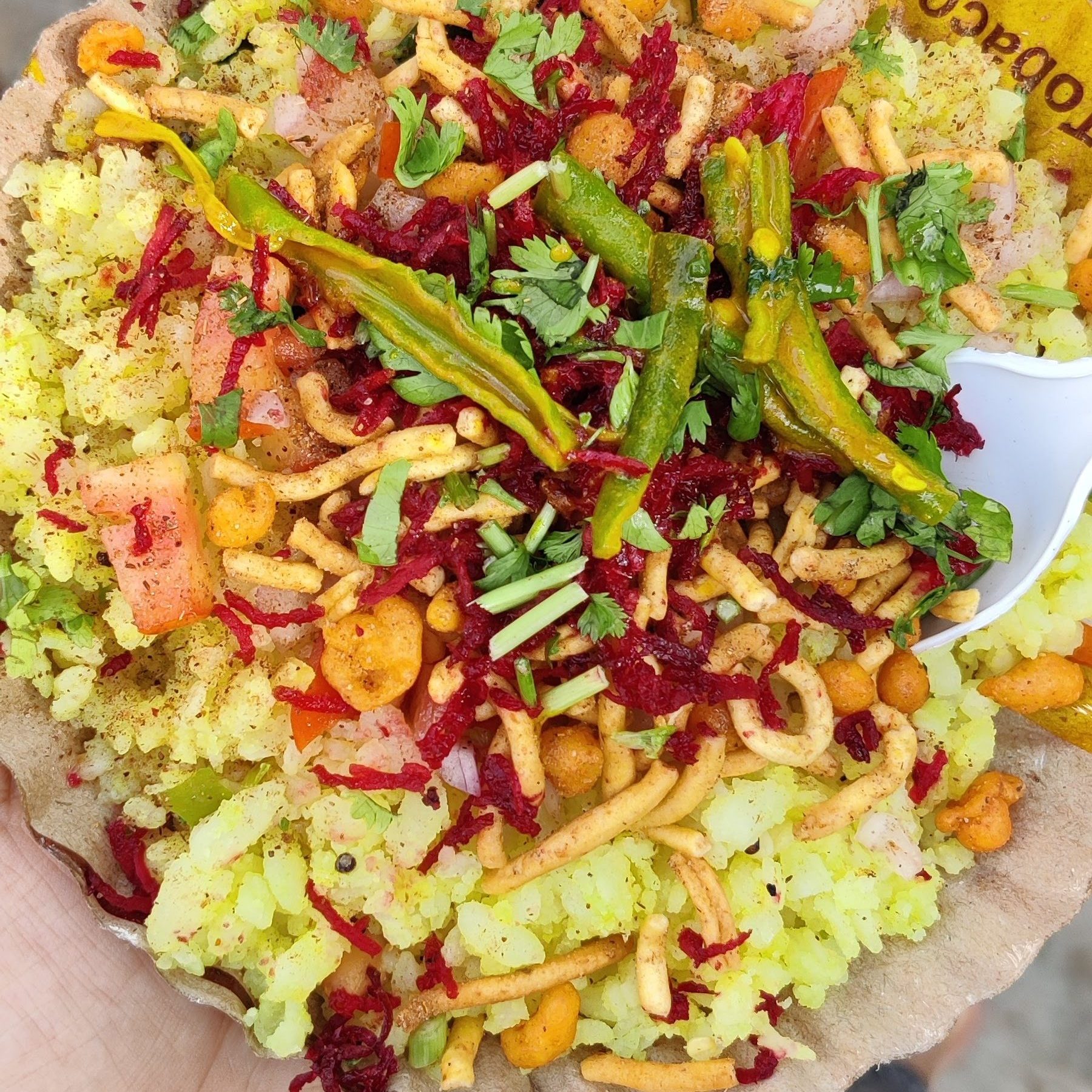
So on my first day at my boyfriend’s house, his father piled up all the traditional fares – jalebi, khaman, gathiyaa and even samosa. Now for most, the popular combination is that of jalebi and fafda. But for my boyfriend, it’s gathiyaa – a fried snack that’s similar to the fafda in constitution but different in texture.
While the fafda is flat and crunchy, the gathiyaa is soft but chewy and a whole different kind of delight to indulge in. It is the best thing you will eat with your morning or evening chai. Apart from that, I learnt that jalebis come in two types – thin, yellow crunchy ones and thick, red, juicy ones. In my opinion, all jalebi is good jalebi but only if it’s hot. Cold jalebis are an embarrassment and a waste of calories.
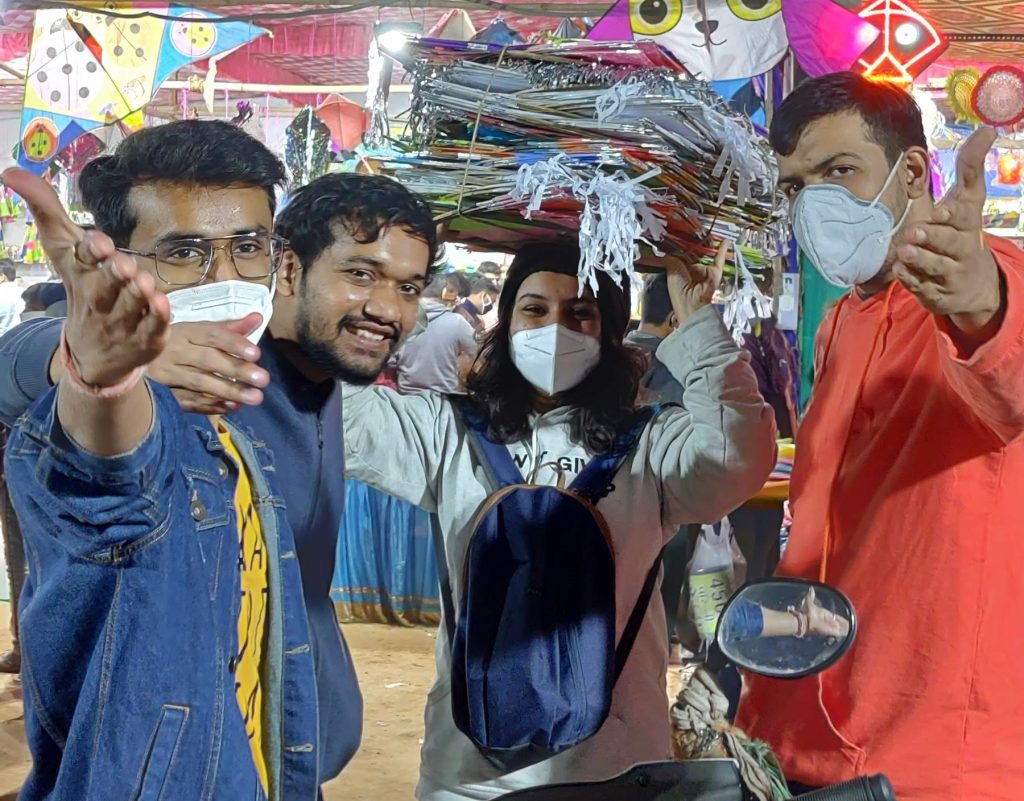
For anyone who’s never been to Gujarat, you need to know one thing – Gujaratis are massive foodies and are willing to eat at any time of the day. Most of the time a nasto would be all the dried snacks that you’d eat between meals and during tea times. Khakhra, bhujiya, sev, farsi puri and everything else that you can imagine. On the other hand, nasto would also be the theplas and the dhoklas that are more well-known. A nasto is also your mid-meal snack and your morning breakfast and generally would be just as filling as a meal.
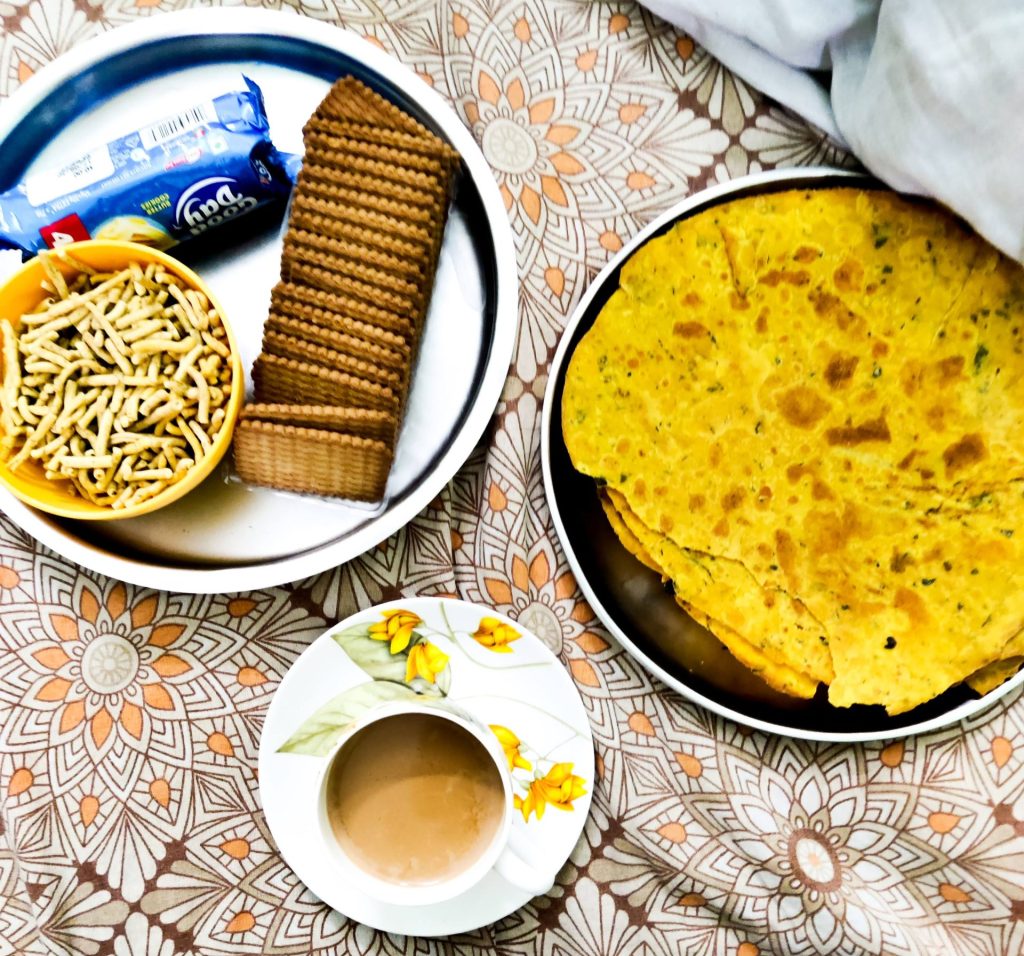
In this process of discovery, guess what I also found out? Khaman and Dhokla aren’t the same. Your mithaiwalla has been scamming you because you’ve been too ignorant to see the truth! I mean what even is a khaman-dhokla anyway?
Yeah, it came as a shock to my non-Gujju ass too. Funnily enough, most brands and restaurants market khaman as either dhokla or khaman-dhokla. Both are terrible misdirections. Khaman is light and fluffy like a cloud and porous like a sponge cake. When you eat it, it’ll melt in your mouth and make you order more. Nylon khaman will be even lighter and will leave you confused about which one you like better. Dhokla on the other hand is dense like a fudgy brownie, or idli and just so orgasmically chewy you’ll hate yourself for ordering more of all three items.
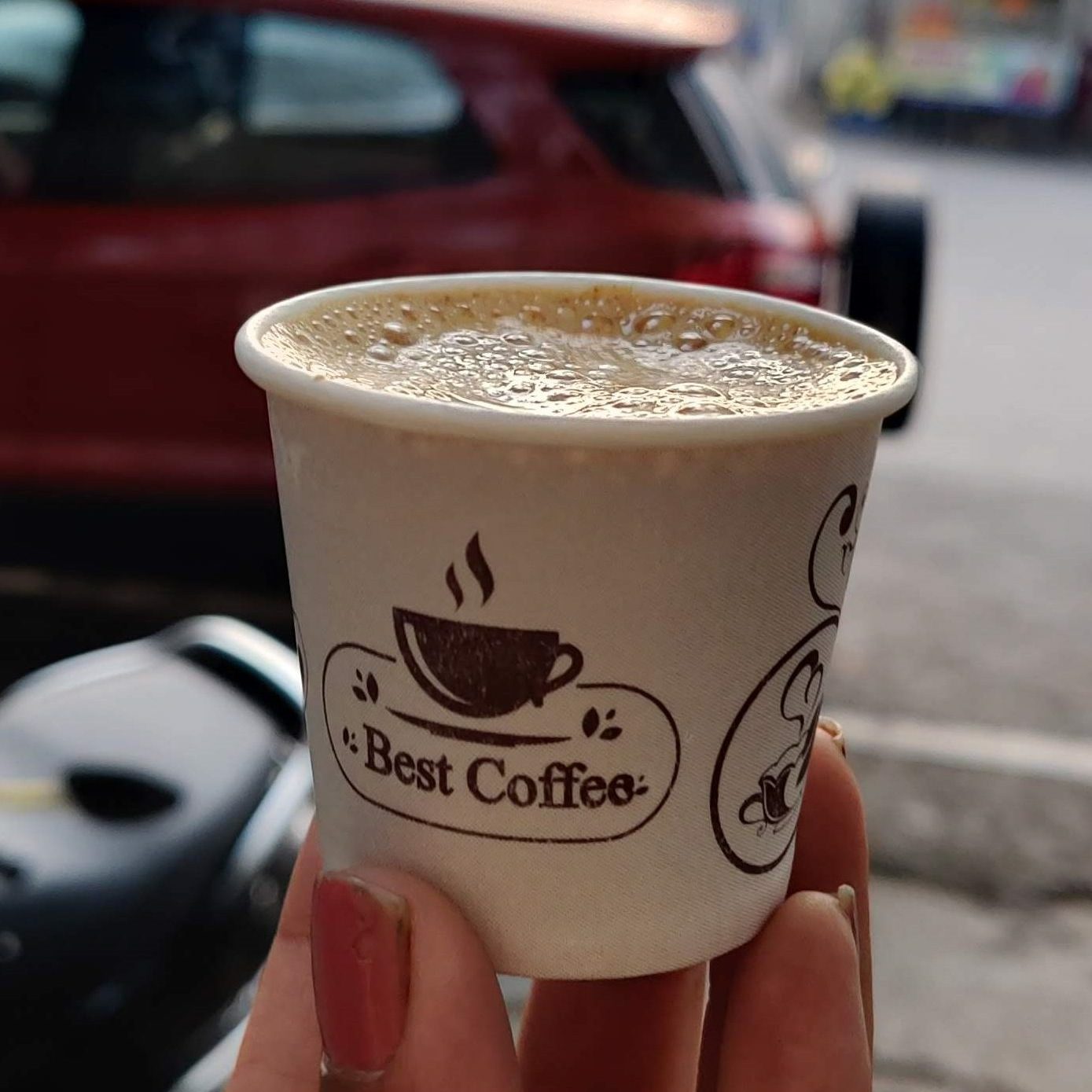
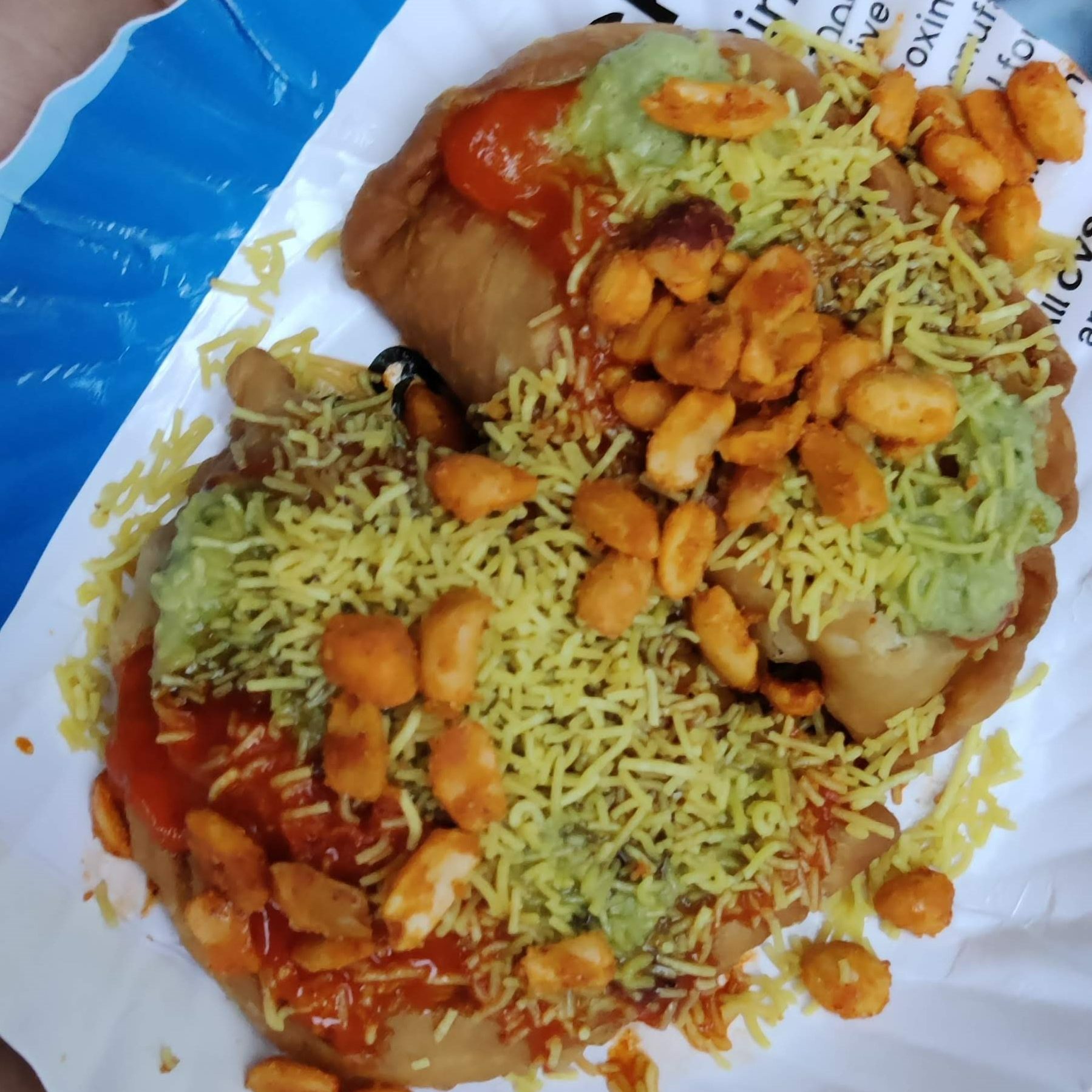
But it doesn’t stop there. Gujaratis pride themselves on their handvo, khandvi, khamani and locho – all made from a similar batter mix but each with their unique textures bringing you distinct and unforgettable eating experiences. Handvo is straight up a vegetable cake that’s prepared like a cake but with besan (gram flour) and vegetables. It’s soft, and chewy and can be made flavourful by adding sweet vegetables like carrot or corn. It tastes waaay better the next day with a cup of chai. Moving on, Khandvi is rolls made from a similar batter but with a more jelly-like structure. Khamani is basically a khaman behl with fun chutneys and garnishing and locho is steamed Gujarati farsan. Locho is a Surati speciality and definitely worth every heavenly spoonful! Honestly, they’re all so good in their own way that over the next few days my brain split into 100 pieces just from having to pick just one. So I chose to put on weight instead.
So if you’re in Ahmedabad I recommend you find a Lakshmi Gathiya Rath, one of the places that sell these beauties and taste each one of them. Then you can come back and be a smart ass with me about why khaman isn’t dhokla.
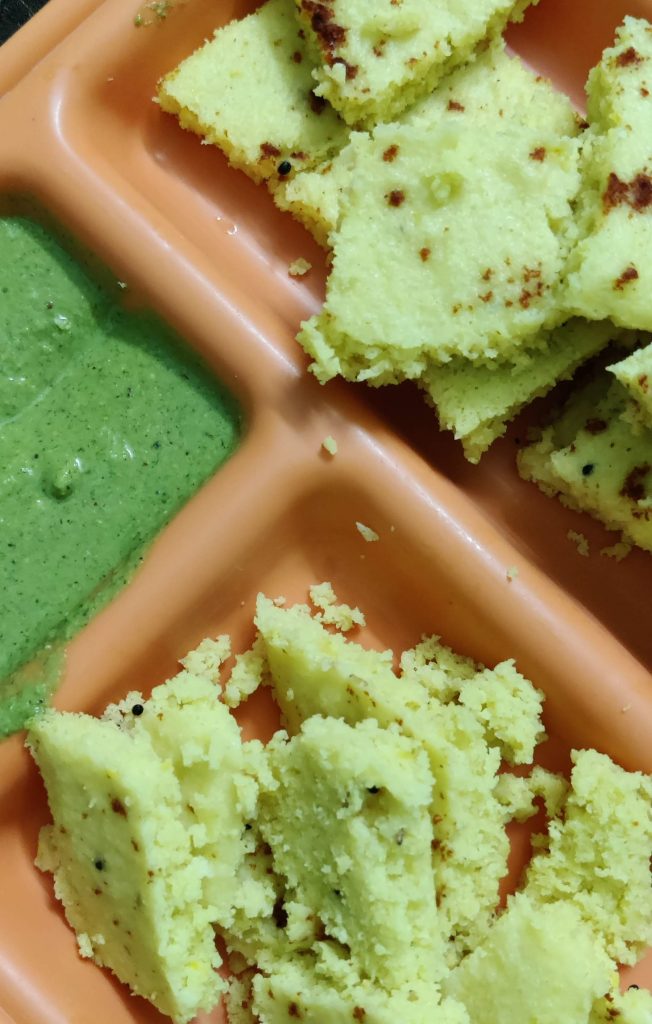
Gujaratis prefer wheat over rice as their source of carbohydrate. But here’s the catch! They don’t have chappatis and phulkas. They have rotlo, rotli and bhakri. While rotli is your everyday phulka dabbed with a little ghee, rotlo is a Kathiywadi special flatbread made from bajra.
For me as someone with a Maharashtrian background, Bhakri has always been a thick flatbread made from jowar or bajra but in Gujarat, it’s a thick flatbread made from wheat atta. They’re all really good, especially with kadhi, dal and even rajma!
So this has been the traditional side of Ahmedabad. But if you want to experience the city’s present, its evolution into what it is today, you should head to Law Garden, Maanek Chowk and some roadside stalls about which I will talk eventually. Ghotala dosa is loaded with cheese, and ice cream sandwiches but with bread, chinese puffs, chinese dosas and so on, Gujarat’s fusion cuisine cannot be stopped!
Apart from that, you should know that like the rest of the country, Gujaratis are big fans of paani puri. They call it pakodi in Gujarati. We made a whole batch at home and devoured it shamelessly!
Vegetarians in Amdavad don’t consider meat as non-vegetarian. Yes, I know that there is a whole gali dedicated to meat-based foods too, but I’m not here to talk about that!
Some Gujaratis sneak eggs into their vegetarian diets and my oh my, do they know how to make their eggs! Some things I tried were egg ghotala, egg curry but with boiled eggs as the gravy base, and a plain boiled egg-tomato-onion salad. Needless to say, they all blew my mind like nothing I’ve eaten before! Here I was bragging about my bhurji skills and Amdavad had already reached the moon!
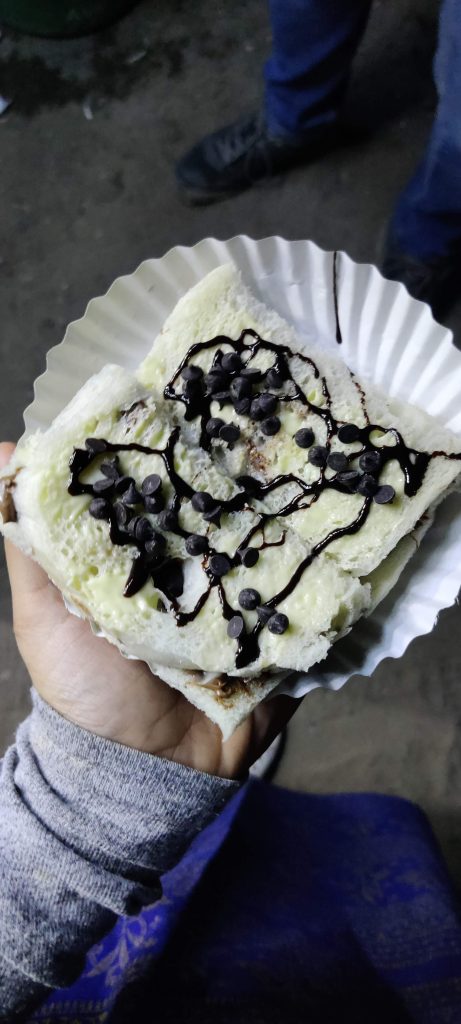
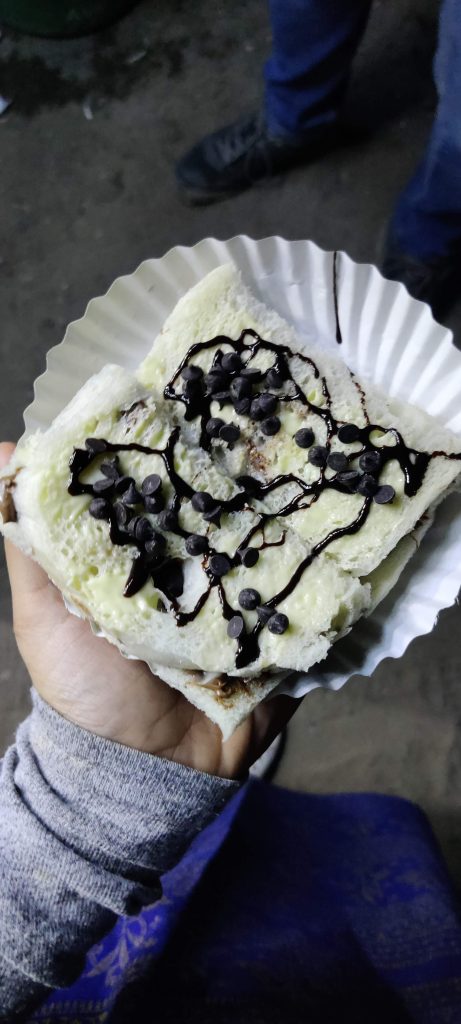
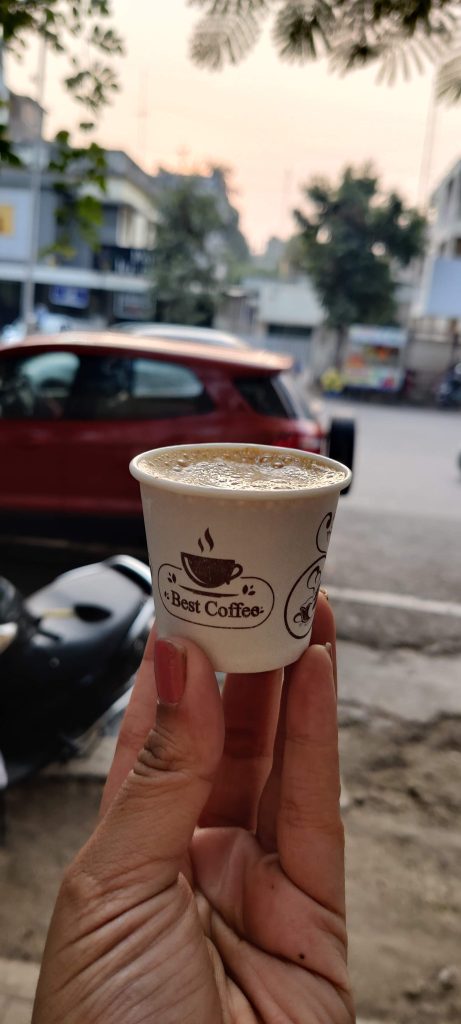
Finally, the one thing in Ahmedabad that I’ve gotten emotionally attached to is the ginger coffee near the Sardar Vallabhai Patel Stadium and the Pudina Tea at Apna Adda. They’re something that I will think of when the weather’s cool or I’m craving a break, an escape. Their teas and coffees come in smaller cups than I’m used to seeing but they pack quite a punch.
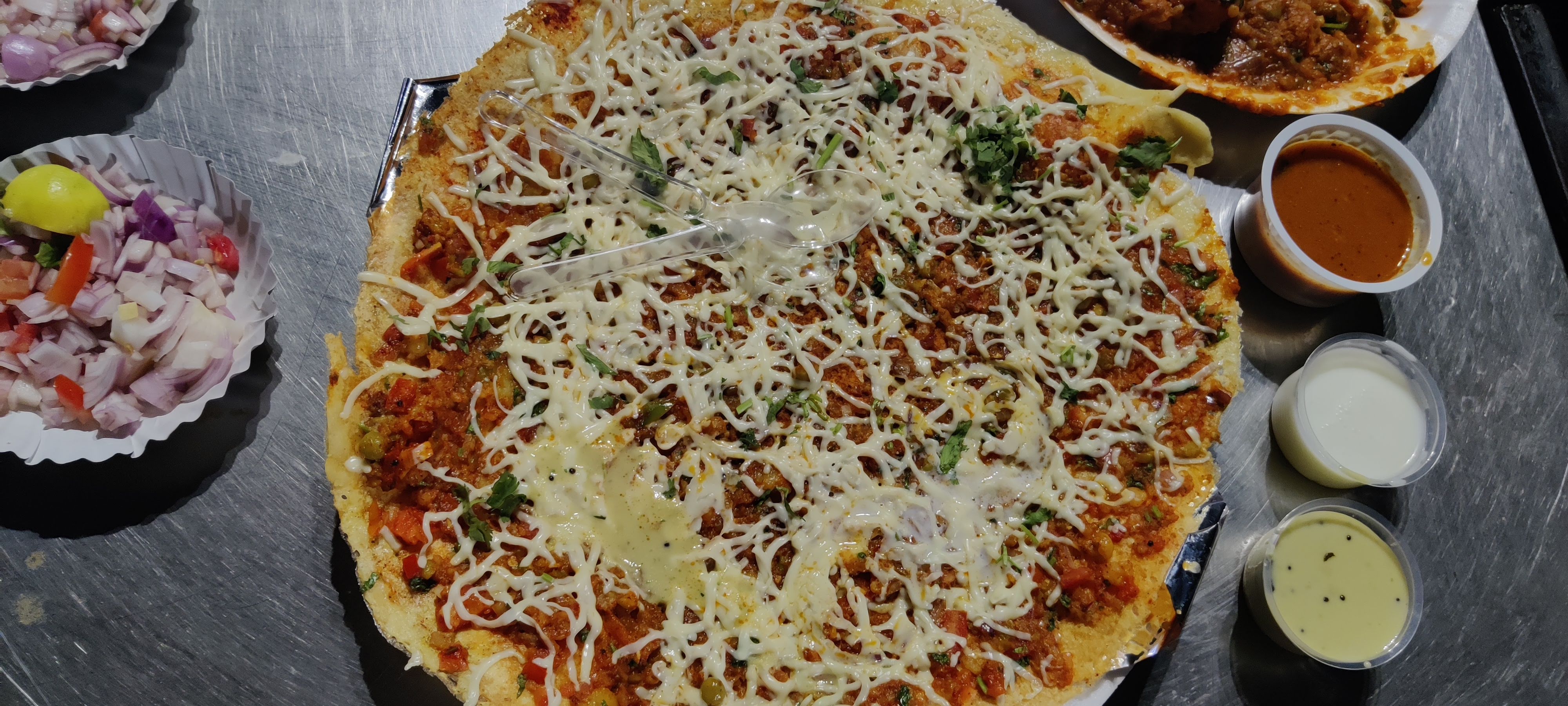
The city for me has been like a festival even on regular dull days. You can get up and leave and you’ll find someone selling a chocolate samosa and you’ll want to try it. A word to the wise – don’t! Apart from that I was Alice in Wonderland and I’ll always want to keep going back!
A final glimpse of some dishes that are a sight for the sore eyes!
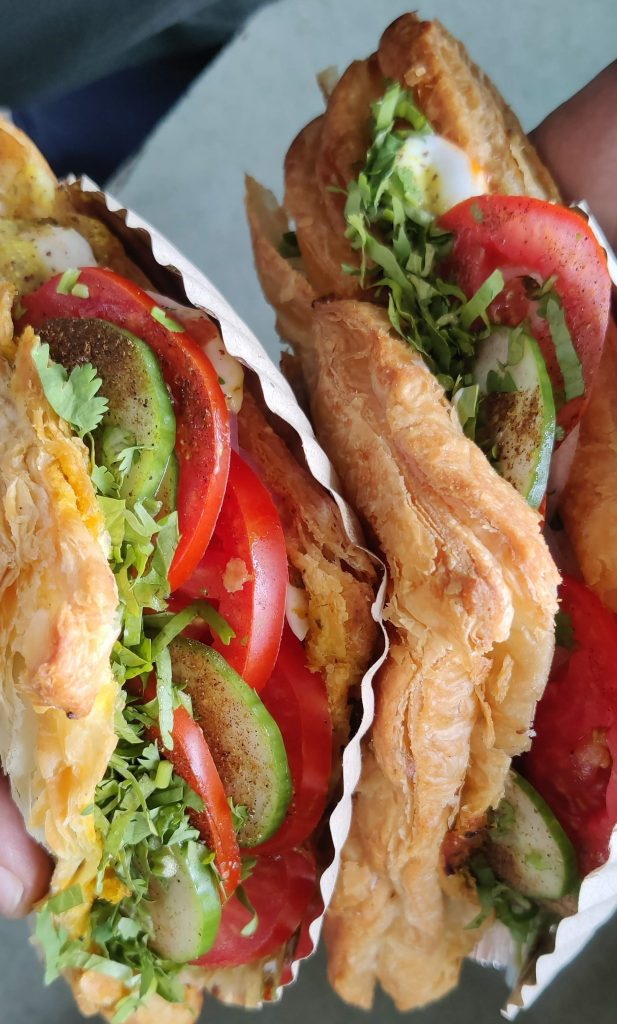
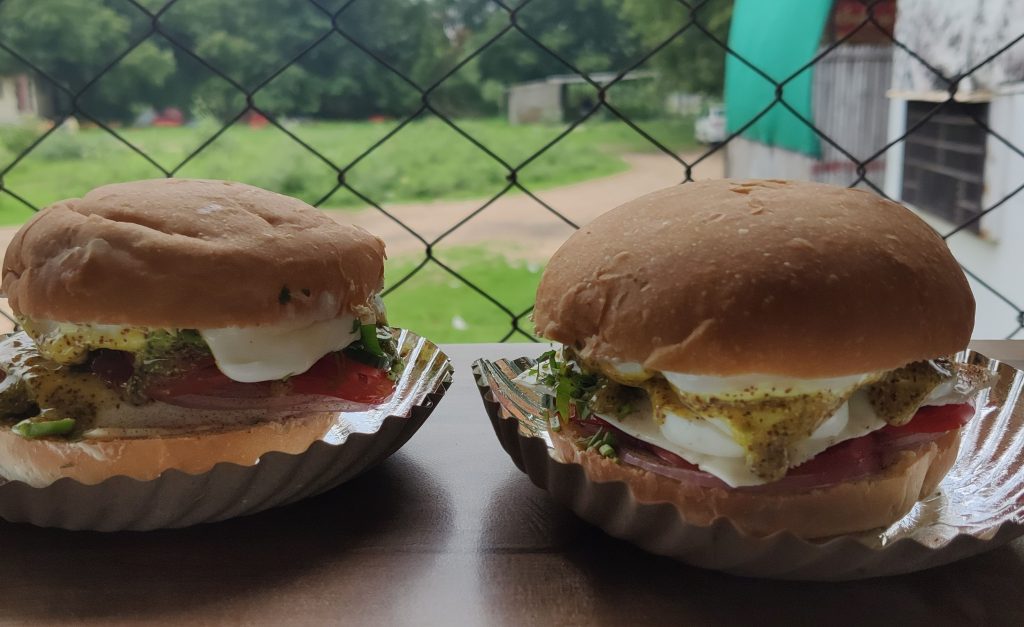
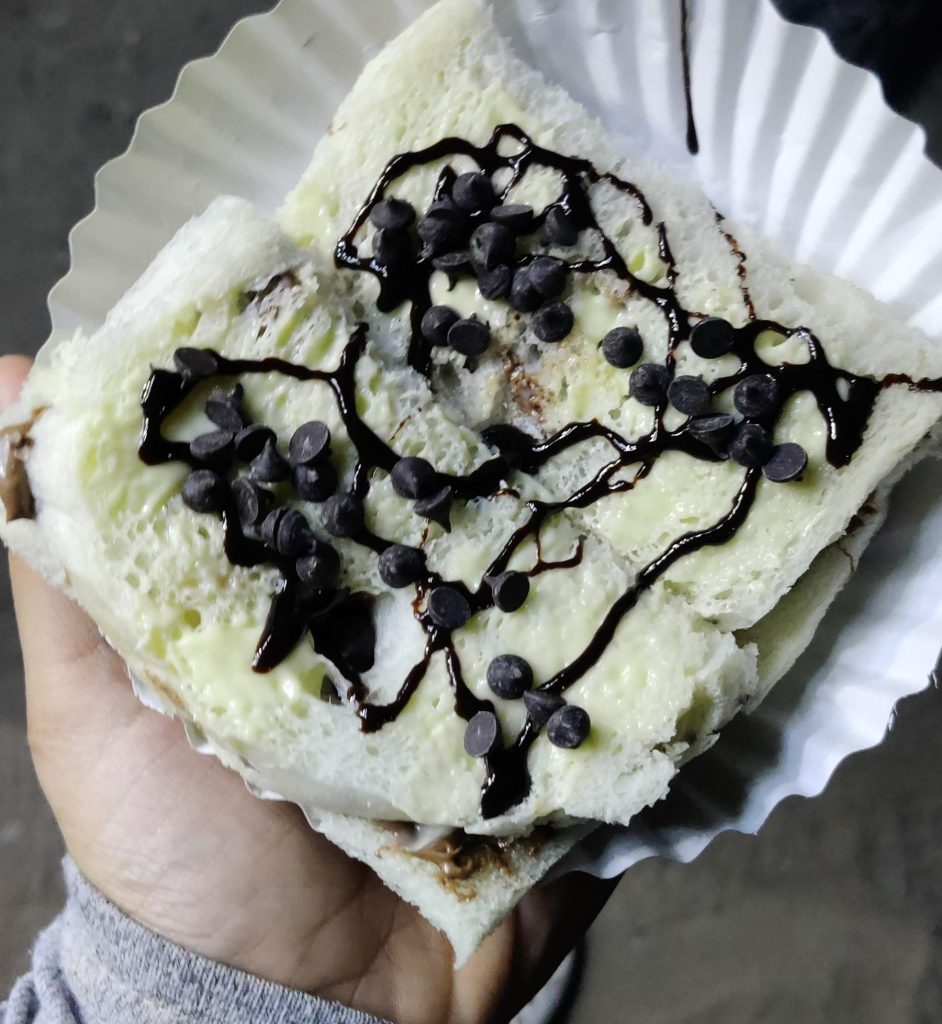
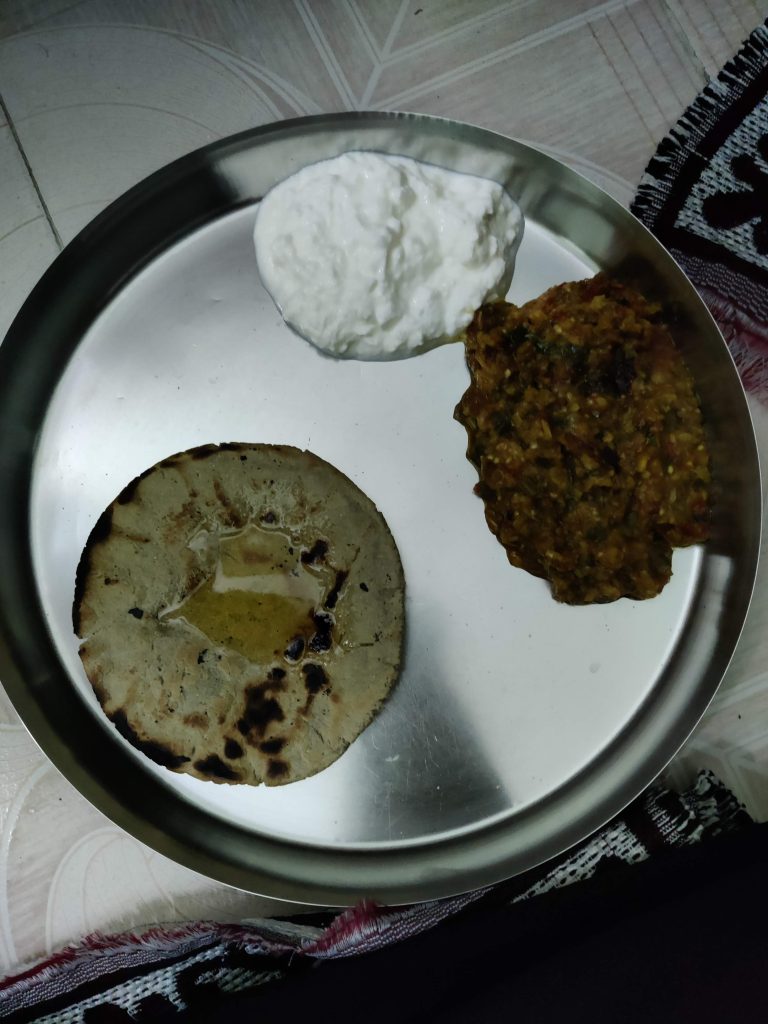
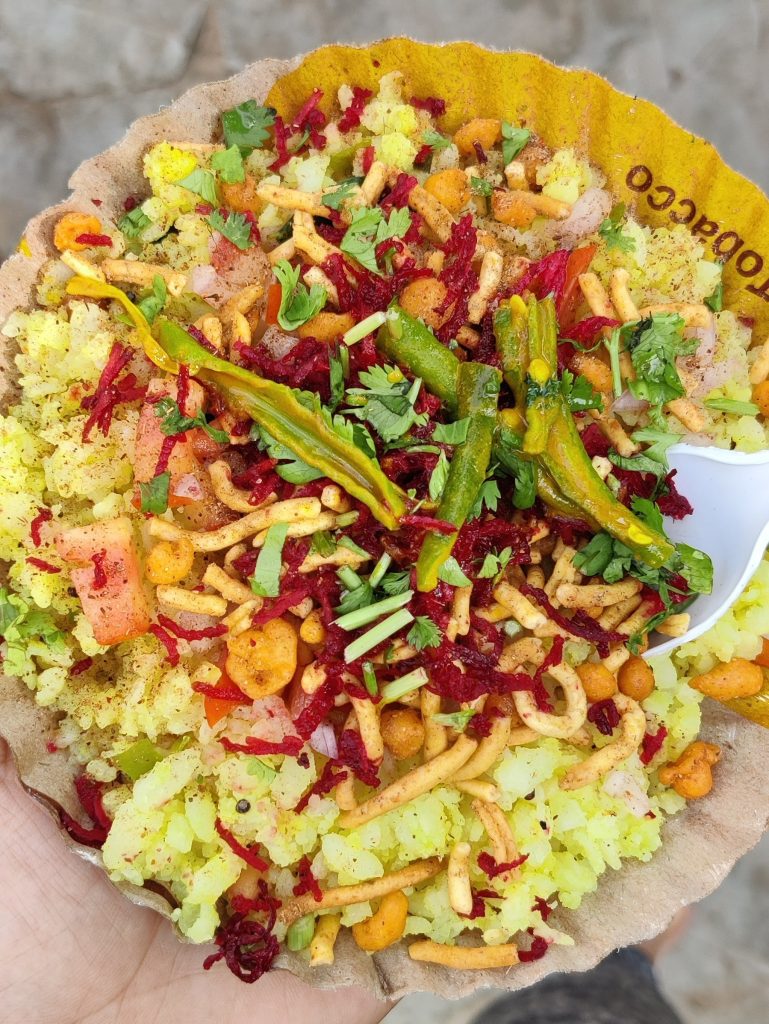
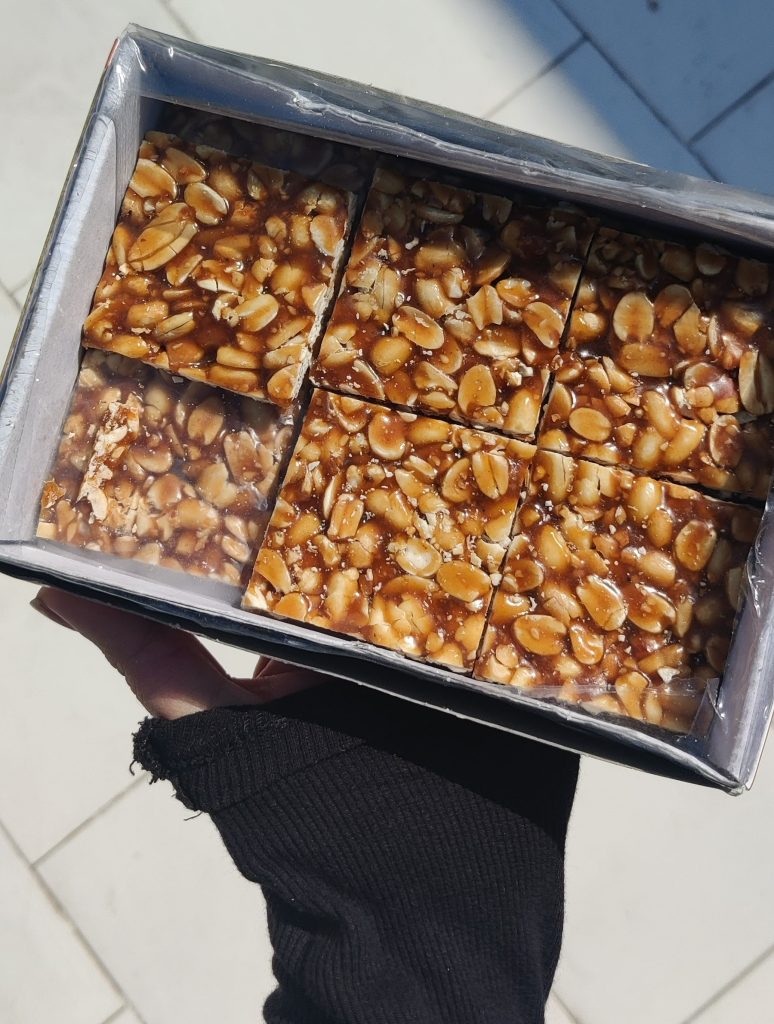
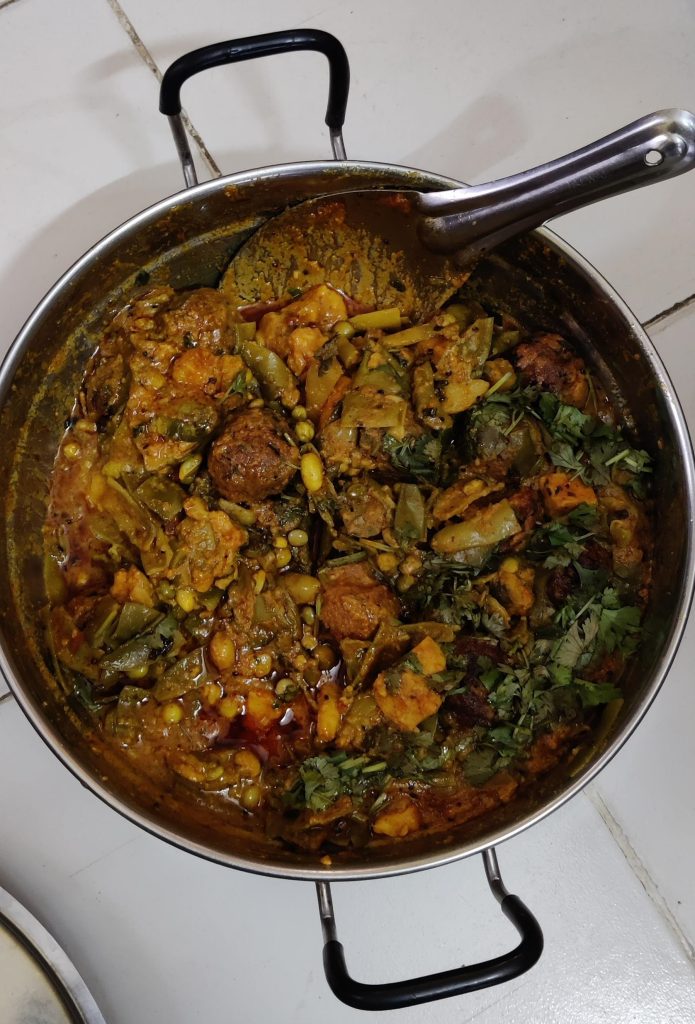
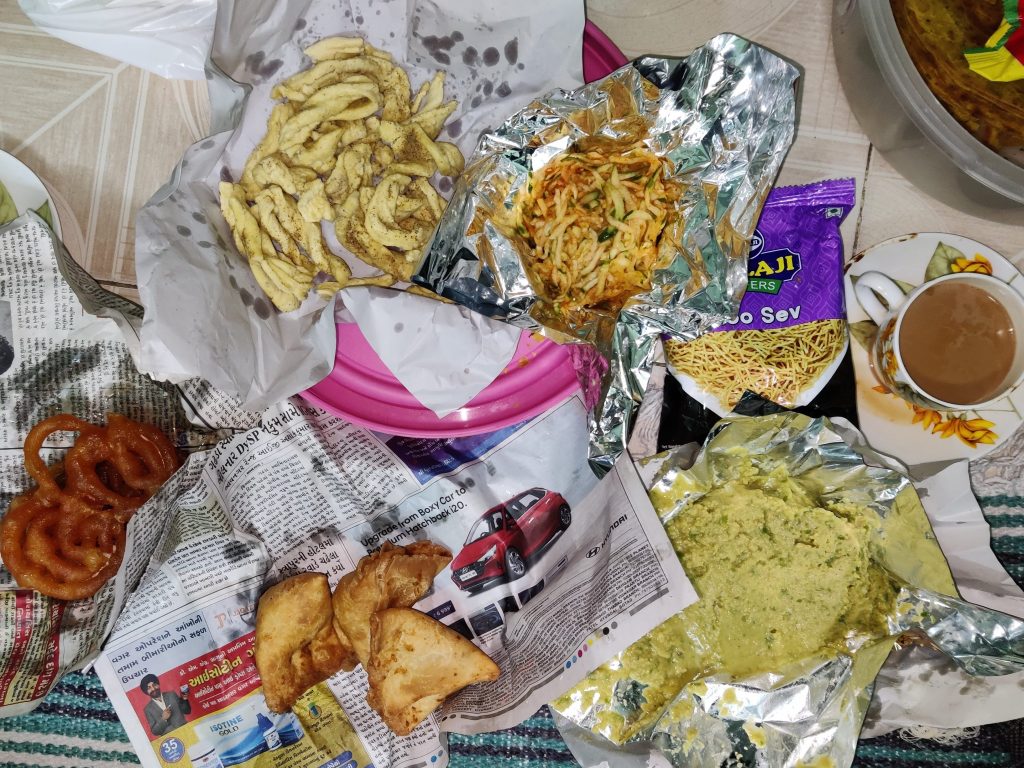
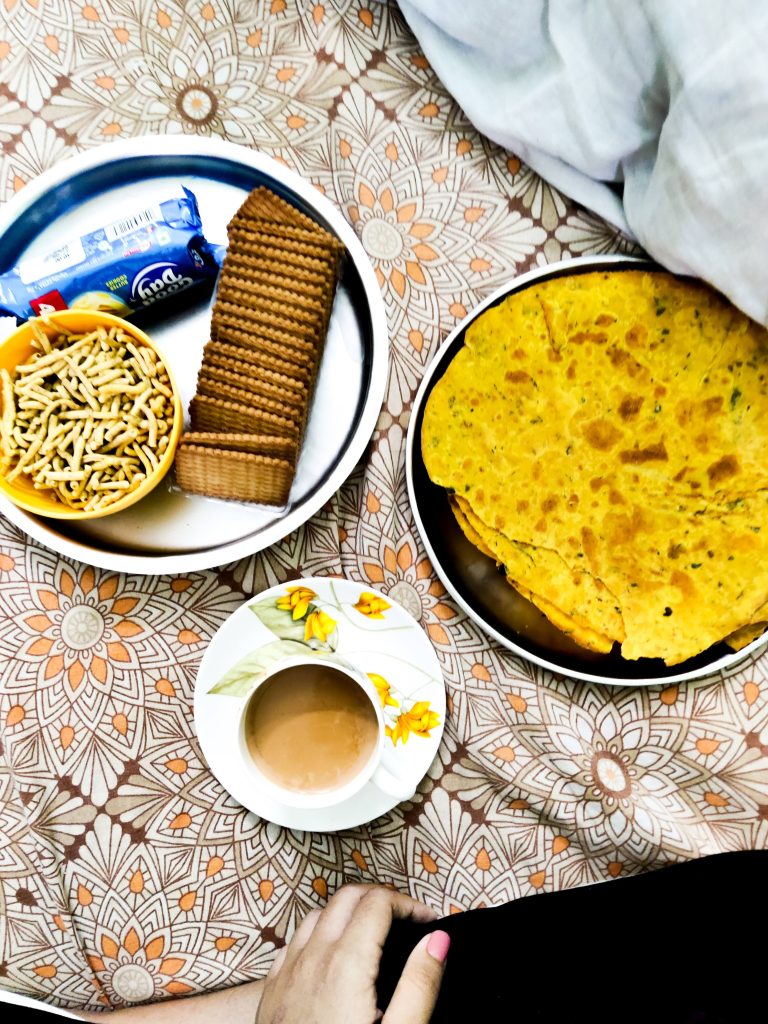
Food Recommendations at a glance!
- Paua/ Poha
- Jugaadi Adda
- Salim’s Burgers and Puffs
- Pudina Tea at Apna Adda
- Ginger Coffee right outside Sardar Vallbhai Patel stadium, on the Sardar Vallbhai Patel Stadium Road.
- Bun Maska Ruturaj Tea Stall LD College
- Amul Sandwich – opposite CEPT
- Gathiyaa, Fafda from Lakshmi Gathiya Rath
- Sheetal Ice Cream, Manek Chowk
- Everything in Maanek Chowk
- Tea Post, Thaltej
- Induben Khakhrawala
- Kandoi Bhogilal Mulchand’s Mohanthaal
- Seva Cafe, (opposite the Municipal Market) where you pay what you want and all food is prepared by volunteers
- Ragda Pattice in the Municipal Market. It’s a small street side stall, you won’t regret eating at!
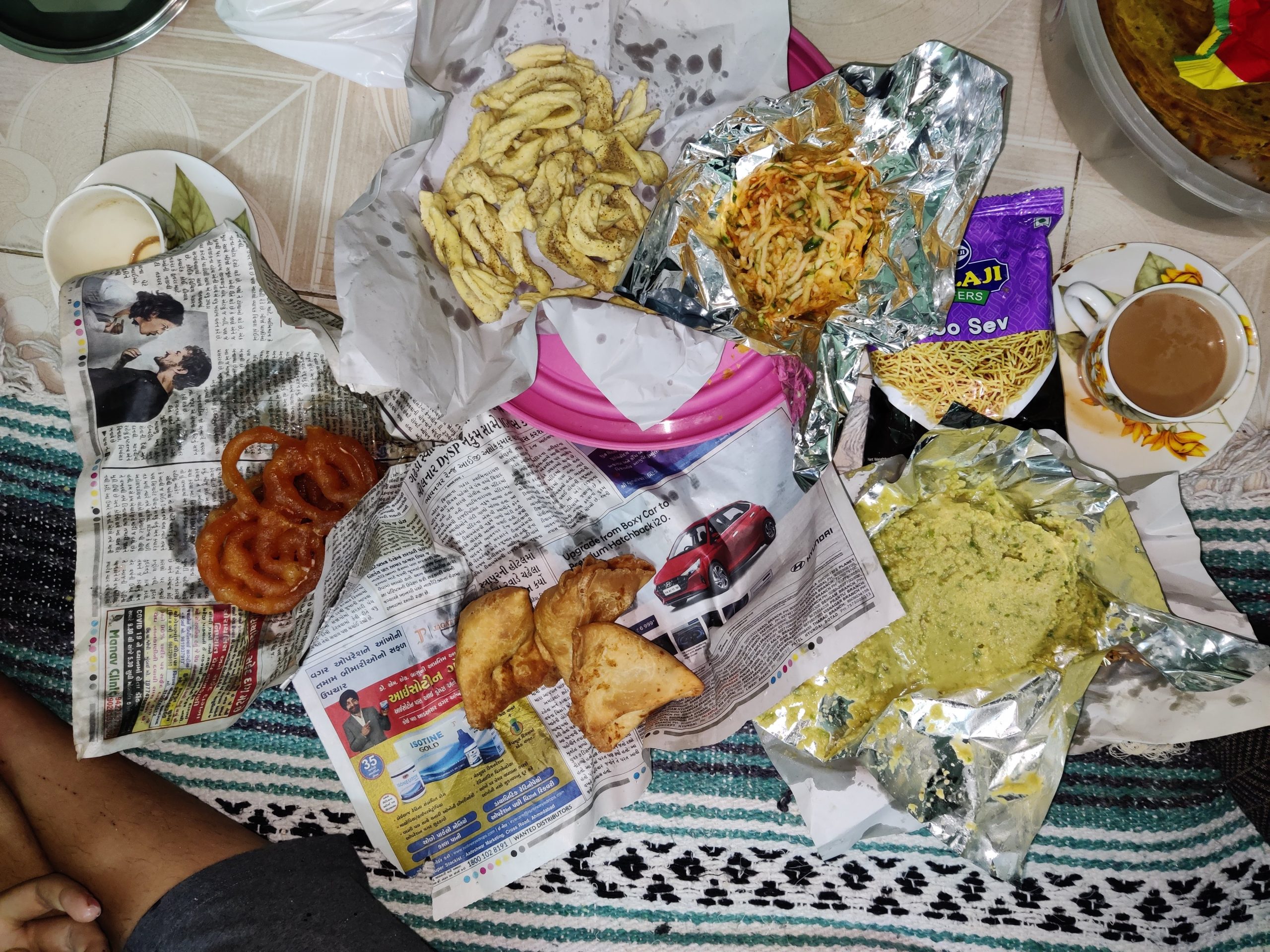
Leave a Reply